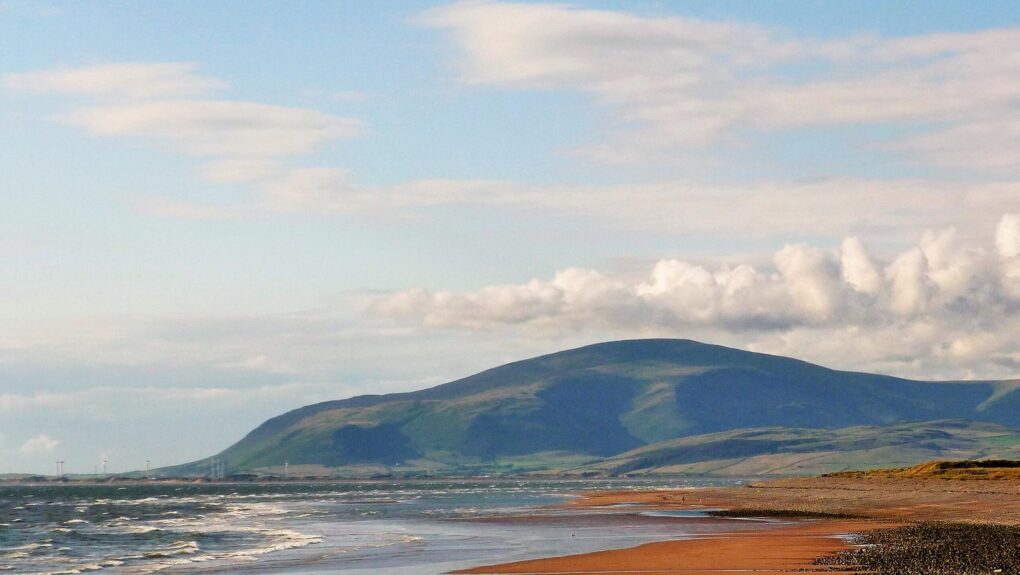Walking north along Channelside in Barrow-in-Furness, Walney Island on the left stands between the Walney Channel and the Irish Sea, which is studded with wind turbines. On a clear day the Isle of Man is visible. To the right the foreground is dominated by the slag bank, partially reclaimed and returned to nature, but still with evidence of its origin as a burning pile of waste from the ironworks, whose flames were visible from Blackpool.
To the north the ever changing tides are extending the dunes of North End Haws in a move that may one day bridge the gap with the mainland, transforming Walney island into a peninsula. And beyond the dunes, rising above the Duddon Estuary, stands Black Combe, from whose flanks the glaciers originally gouged and plucked the clay that built the isle of Walney. This created the shadowed hollow, derived from the Celtic “cwm” that gives the mountain its name.
Thus the landscape is constantly changing, not just in geological time but within living memory as human activity combines with nature to dramatic effect. The view is always spectacular and changes with the weather, revealing fresh contrasts every day.
BLACK COMBE
I
The evening mist obscures the shore beyond the Duddon Sands
Turning the island spit of dunes into a pencilled range of hills
Standing sharply to attention, waiting to resume its northern march.
Beyond the mist a real mountain stands, or rather crouches,
Leonine, soft focused by the chalky air. It turns its back on Cumbria,
Watching lest giants quit their southern cwms to cross the sea.
II
Someone has taken a knife to Black Combe and sliced
Its crusty top to spread with cloudy cream,
A scone of stone served up without the jam,
Although a marmalade sun weakly warming
Is waning in the west.
III
Now and then when sky is blue and sea,
Untarnished like a well-wrought speculum,
Reflects the heavens framed by neighbouring hills,
And terracotta tiles catch the sun
While shadows add intensity to bright,
Then I recall an Adriatic scene.
But… this is Walney. Black Combe looms
Outshading shadow and outshining light.
IV
The clouds peer over Black Combe but not enough to cover it.
Below, the foothills catching evening sun, smile across the estuary
With a sideways glance to Millom.
V
One time the clouds descent was barred
By contours ruled across the sky.
The space between the sea and cloud
Exactly filled by turbines set in line
To catch the wind. It looked as if
Their blades were bearing heaven’s weight.
The air behind glowed red, with embers
Of the sinking sun.
VI
Black Combe is living up to its name
Long shadowed by a western sun that still
Has light to spread upon a humpbacked creature.
No whale, it’s three legs paddling beneath the Irish Sea.
One final clue – it has no tail.
VII
From here the mountain thrusts into the sea
But close inspection shows it belted in by fields
And towns and railway lines.
Only when the tides retreat the mountain dips its feet
In muddy sand and silted alleyways that carry rivers down
To meet these coastal inundations.
VIII
Leave the path, ignore the warning signs
Of catastrophic cliffs and scramble up
The cinder track of crushed and melted slag
To stand atop the ironmasters’ hill.
Kestrels nest beneath if you can dare to inch
And peek over the edge.
I prefer to stand and gaze
Over sea and Duddon sands
Where mountains creep and crowd behind
Black Combe to tweak its tail.
Black Combe, a poem by Mike Stanton September 1st 2022
